Embracing a second chance
November 25, 2013
Gratitude is rare in criminal courtrooms, but for the women gathered on a recent Friday before Los Angeles Superior Court Judge Michael Tynan, thanksgiving was everywhere.
One was clean after an addiction that had crippled her since age 7. Another was in sober living after 30 years of shuttling between Skid Row and prison. Yet another was a middle-aged ex-con when she hit her deepest bottom, and she wept as she described the redemption she shared with the five women beside her.
“I was so tired,” 55-year-old Donna Majors said last week, as prosecutors and parole officers brushed away their own tears at the small graduation ceremony in Tynan’s downtown courtroom. “And I was given the chance to finally face my demons, to know who I am and finally be at peace.”
If the emotional scene seems a far cry from standard L.A. criminal justice, it may be because the program that spawned it is a departure as well. Since 2007, the Second Chance Women’s Re-Entry Court has been among the most successful diversion programs in Los Angeles County, offering an intensive yet cost-effective alternative to prison for hundreds of high-risk female felons.
The program targets parolees and probationers charged with new offenses, channeling them into a 6-month residential substance abuse treatment program in lieu of another term behind bars. That rehab, at the nonprofit Prototypes residential center in Pomona, is followed by up to 18 months of tightly supervised outpatient treatment, plus services ranging from parenting classes to educational and vocational training.
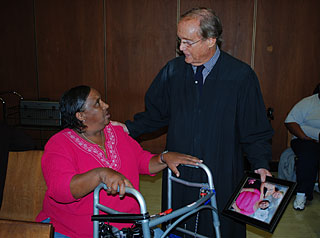
Judge Tynan greets program alum Georgina Moore, who presented him with a picture of her and her daughter.
Each woman checks in regularly before Tynan, who consults with therapists and court officers to determine when a participant can move to the next level of treatment. Those who relapse or reoffend return—often remorsefully—to county jail or prison, but most move on to sober housing, family reconciliation and even jobs and college.
At last count, 295 women had been formally admitted and 61 had gone back to jail or prison, according to a recent review conducted by the Public Defender’s Office. About 90% of the recidivists, the review found, were women who had not yet completed their treatment.
Of the 125 who have graduated so far, the review found, only eight—about 6%—have since gone back to jail or prison. By comparison, according to state figures, the recidivism rate in 2011 was 55.1% for female inmates.
“You’ve come a long way,” the judge told a glowing ex-con at the most recent graduation ceremony, glancing at a file that included her latest report card from Mt. San Antonio Community College. “You got an A at Mt. SAC! Congratulations! Gimme a hug! I remember when you came through that door looking like something the cat wouldn’t have dragged in on a bet.”
Well into his 70s, Tynan notes that he could be retired. But the judge—who also presides over the county “drug courts” and alternative sentencing programs for the mentally ill, military veterans and others—says that his is a labor of love.
This has been particularly true lately, he adds, as funding concerns have been looming over the program because of a new state law aimed at putting the brakes on California’s burgeoning state prison population. Under the AB 109 law, known as “realignment,” the county, rather than the state, has been given responsibility for supervising and incarcerating offenders whose most recent convictions are for non-serious, non-violent, non-sexual offenses.
But because the Women’s Re-Entry Court is largely underwritten by a state grant for parolees, women who once were prime candidates for the program—street people, hustlers and others whose long criminal histories stem from drug habits—are now ineligible because the state no longer supervises them.
And the county, which now oversees these offenders, doesn’t directly fund its Re-Entry Court participants. Under AB 109, these offenders are being channeled into other, less intensive programs underwritten by realignment money. If they re-offend now, they can only be placed in Re-Entry Court if an alternative funding source pays for their treatment—a grant for AIDS patients, for example, or for pregnant women.
Meanwhile, officials say that parolees who remain under state supervision now often require special consideration to get into the program, because they are more institutionalized, with more serious convictions.
Shari Crome, an assistant unit supervisor with the California Department of Corrections and Rehabilitation, says she’s frustrated “because I’ve been here almost since the beginning of the program, and I’ve seen the successes. There’s nothing else like it in the state, and it works.”
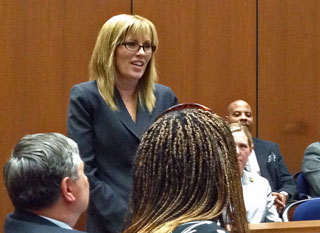
Deputy Public Defender Nancy Chand, a key member of the re-entry court team, congratulates the grads.
Deputy Public Defender Nancy Chand, who has represented most of the Re-Entry Court women, calls the AB 109 funding snag a rare sour note in a program that has transformed some of the most desperate lives in L.A.
“These women are really scarred,” Chand says. “Most come in with horrific trauma, and were victimized as children, enduring severe physical, sexual and emotional abuse and abandonment. Some can’t read and write. Some can’t work. Eighty-one percent have one or more mental health diagnosis and 50 percent have two or more. As one of my clients put it, they’re literally scraped off the streets.”
Currently, Tynan says, about 60 women at any given time are enrolled in the program, a little more than half of them paid for through the $500,000 annual state correction’s grant and the rest covered by a shifting and uncertain patchwork of federal, state and county grants to Prototypes.
The cost is about $18,000 a year for each woman, versus an incarceration cost of close to $50,000 a year in prison or more than $36,000 a year in county jail, not counting medical and mental health care. Officials at the Public Defenders Office estimate the program has saved tens of millions of dollars; many of its participants had been facing jail or prison sentences of 10 years or more.
Barbara Dunlap, for instance, was a 58-year-old homeless addict with 15 prison terms under her belt by the time she entered the program.
“I discovered alcohol before I started school, and I started school at the age of six,” Dunlap says. Her babysitter sold her to men when she was a child and by 21, she says, she was a prostitute with a criminal record. By the time her public defender sent her to Tynan’s courtroom, she was a 58, suffering from AIDS and hepatitis and was wheelchair-bound as the result of surgery stemming from a poisoned heroin injection.
Now 61, she is sober, living in permanent supportive housing, enrolled in college classes and a mentor at Prototypes. And at the ceremony in Tynan’s courtroom, she addressed the most recent graduates from her electric wheelchair, rolling back and forth across the courtroom, testifying like a preacher as a dozen state corrections officials watched from the jury box.
“When they found me, I was on the streets, and I don’t even know how they told me from the sidewalk—I was cold, my life was filled with stench and I was gray, without any life in me,” she proclaimed, her voice trembling.
“But they treated the whole woman—my health issues, my substance abuse issues, my anger issues. I didn’t know that anyone understood people like me.”
Taking the podium in Dunlap’s wake, the graduates told their own harrowing stories, weeping with gratitude as they thanked their therapists, probation and parole officers, prosecutors and defenders, families and, of course, the judge.
Brigitte Benjamin, 52, told the group that she had spent 30 years on Skid Row, and had expected to die there. Now, she is in a sober living facility and working toward her GED after 30 years on Skid Row.
Helen Navarro credited Tynan and Prototypes with forcing her to confront the roots of her addiction for the first time in the 20 years she had spent cycling in and out of prison on robbery and burglary charges. “I didn’t want to go deep-deep-deep,” said Navarro, a 51-year-old recovering crack addict—now sober and working as a receptionist at a country club in the San Gabriel Valley. “The counselors made me look at myself.”
Sandy Raymond, a 48-year-old mother of two who had lost more than half her life to crack addiction, did a little dance as Tynan handed her a certificate of completion. “I didn’t know nothing but going in and out of jail and stealing stuff,” she said. “But now I’m a secretary. I love my life.”
Over cupcakes and high fives from their families, the women also quietly gave thanks for the inner strength they were able to muster.
Brandishing her graduation certificate after decades of crime and addiction, Mary Willis said that for the first time in 25 years, she now has a relationship with her children. “I will always keep in the back of my mind what Judge Tynan told me,” she said proudly. “Give yourself a chance.”
Posted 11/25/13
A healthy helping of thankfulness
November 22, 2013
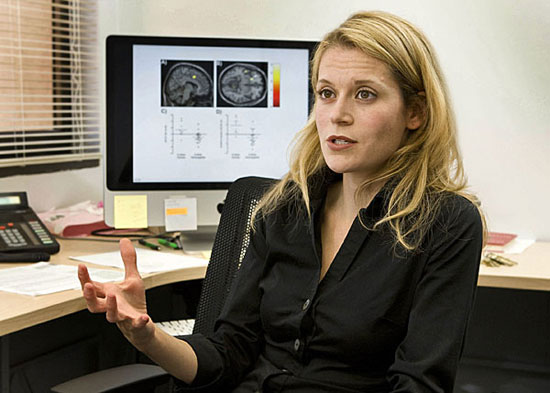
Naomi Eisenberger of UCLA is among the researchers working to expand our understanding of gratitude.
Giving thanks—it’s not just for the fourth Thursday in November anymore.
Researchers in the burgeoning field of gratitude science are finding a host of psychological and physical benefits associated with feeling and expressing thankfulness.
Gratitude has been linked to reduced depression, increased optimism, fewer physical ailments and more of that feel-good neurotransmitter dopamine in the brain.
It’s not all new—cultivating an “attitude of gratitude” has long been a part of 12-step addiction recovery programs—but there’s growing excitement about the expanding frontiers of such research and about finding new ways to scientifically document the effects of being thankful.
At UCLA, for example, Naomi Eisenberger, an associate professor of psychology, is in the midst of a project in which the participants—women ranging in age from 30 to about 60—go through a six-week “gratitude course” involving writing about things for which they’re thankful. Blood samples taken before and after the course will be compared to see whether inflammation levels, linked to a number of chronic diseases, have been affected by the gratitude exercise.
“We want to see in this study whether this gratitude intervention can actually reduce some of the inflammatory activity that we’re seeing in these individuals,” Eisenberger said.
Eisenberg’s research is part of a broader effort by the Greater Good Science Center at UC-Berkeley to “expand the scientific understanding of gratitude.” The Center, with funding from the John Templeton Foundation, last year awarded $3 million in grants to researchers across the country for a wide range of studies, including exploring how gratitude affects romantic relationships, healing after a heart attack, health and resilience in aging, and what people choose to purchase—experiences vs. material objects—in a “consumerist society.”
“This research is exponentially growing and we hope can have a continued impact in the world,” said Emiliana Simon-Thomas, the center’s science director. “Gratitude isn’t a new idea, right? There’s certainly a long tradition of different philosophical frameworks or religious traditions that embrace and promote gratitude practice. But for many it’s important to also have this empirical base [to demonstrate that] this is something that serves ourselves and our communities in a profound and measurable way.”
Even as the science expands and new discoveries proliferate, one fundamental remains the same: practicing gratitude is free and accessible to just about everybody.
“It’s shocking how simple it is,” Simon-Thomas said. (Some tips on getting started from the Greater Good website are here and here.)
But here’s something to keep in mind if you’re counting your blessings around the Thanksgiving table this year: it seems that not all gratitude is created equal.
“What the research is starting to uncover,” Simon-Thomas said, “is a pattern showing that gratitude towards people, particularly gratitude expressed—not just felt, but expressed—is actually the most powerful form of gratitude, one that has the most bang for your buck in terms of its impact on your day-to-day psychological experience.”
Marvin Southard, director of the Los Angeles County Department of Mental Health, sees a “use-it-or-lose-it” pattern emerging in some of some of the recent research into the workings of the brain.
“It’s like a muscle. If you use certain muscles, they get stronger. The muscles that you don’t use get weaker,” he said. “It’s the same thing with the way the neurotransmitters work in our brain…There actually has been some clinical work done to show that focusing on positive things, cultivating a sense of gratitude for the things that have happened in one’s life, even for people who are suffering from a chronic illness, produces better health outcomes for those individuals.”
In some ways, the new gratitude research is less about re-inventing the wheel than providing giving scientific credence to something that’s long been a part of the therapeutic experience.
“The sense that things like meditation and gratitude are good for you is common sense in a certain sort of way,” Southard said. “And I guess what ended up surprising me is that there seems to be so much scientific neurological research that supports those things that in the past we would have just taken for positive common sense.”
Robert Emmons, a UC-Davis psychology professor and author widely seen as the foremost pioneer of gratitude research, said the subject has exploded both in the popular imagination and in research because it works.
“The topic has become popular because people realize what science is now proving—that there is remarkable power in gratitude to heal, to energize, and to change lives,” Emmons said in an email. “There is a new generation of gratitude researchers out there who are examining the health effects of gratitude. Some of the findings are really amazing. They are using state-of-the-art measures of biomarkers of health and aging.”
And how do the mental health and neuroscience professionals themselves get their gratitude on?
In Simon-Thomas’ case, a nightly game of “Rose, Bud, Thorn” around the family dinner table is just the ticket.
“Rose is something that you’re really grateful for, that you want to think about and appreciate,” she explained. “The bud is something that you’re looking forward to, that you’re excited about happening in the future. The thorn is something that’s difficult that happened…It’s nice to do every day. It sort of keeps us all in touch and gives us more insight into what’s going on with each other and with ourselves.”
Emmons watches how he communicates: “I like to use the language of gifts. Think of the benefits you received today as gifts. Relish and savor the gifts you have been given. That’s what I do and what I suggest people try.”
As for Southard, he’s found something that serves him well, even on those marathon board meeting Tuesdays at the Hall of Administration.
“I meditate twice a day and at the end of each session I try to be conscious of the blessings in my life—even on Tuesday.”
Posted 11/22/13
Remembering JFK
November 22, 2013
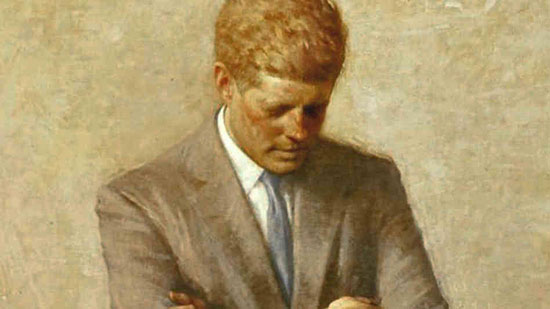
John F. Kennedy's official presidential portrait by artist Aaron Shikler was posthumously unveiled in 1970.
It was the fall of 1960, just two months before the presidential election, and John Kennedy was making a swing through Los Angeles for a rally at the Shrine Auditorium. I was 11, and I was determined to be there.
Kennedy already was my hero. When he challenged us with his youthful energy to give more of ourselves in the service of others, he sparked a political flame in me. So I begged my dad to take me to the Shrine. Before we jumped into our Plymouth for the drive downtown from our Fairfax home, I grabbed a stick in the backyard and taped a Kennedy bumper sticker to it.
When we arrived at the Shrine, the place was mobbed. We couldn’t get inside but, because I was small, we snaked and jostled our way through the thick forest of excited grown-ups to the very front of a walkway where Kennedy would pass to enter the auditorium. As my striding hero approached, I shouted and waved that stick so wildly that he had to step back to keep from getting whacked.
Inside the auditorium, the candidate would speak on the weighty matters of the day—the tightening tensions between democracy and communism, survival in a difficult and dangerous world, racial and religious bigotry. As I sit here now, I suspect most of those policy points would have gone over my head. But the promise of a New Frontier that Kennedy carried into L.A. and across the nation certainly didn’t miss the mark with my heart.
In recent days, we’ve seen stories of every sort and slant on Kennedy and his administration to commemorate the 50th anniversary of his assassination in Dallas on November 22, 1963. Scholarly debates over the impact of his presidency will persist for decades to come. So too, I imagine, will the lingering conspiracy theories that swirl around the rifle shots fired by Lee Harvey Oswald.
But in my circle of friends, we’ve found ourselves talking less about the details and what-ifs of JFK’s presidency and more about his personal impact on the course of our lives during such formative ages. Truth is, many of us have never gotten over Kennedy’s death. It was so sudden, so personal. In that sense, it reminded me of the grief of my mom’s passing just four years earlier.
During Kennedy’s tenure, we were still too young to be skeptical or, worse, cynical from the experience of some earlier political disappointment. When John Kennedy said anything was possible, we believed. When he told us we could make a difference, we acted—even if it was in our own, youthful ways.
I can still remember running for Boy’s League vice president in 9th grade at Bancroft Jr. High School in Hollywood after Kennedy’s election—my first political race. During a campaign “speech” to the students, I informed them that a special guest was there to offer support for my candidacy. I turned around and pulled on a Kennedy mask that I’d been hiding behind my back. I then swung around again and, in what I’d like to think was a pretty spot-on Kennedy impersonation, urged the now-cheering students to cast a ballot for Zev. I won, with 90 percent of the vote.
Today, I look back at my silly play-acting and know, on a deeper level, that I was identifying for the first time with a real-life political figure, an identification that has inspired me throughout my nearly 40 years in elective office. The political activism to which I’ve dedicated my life began with Kennedy.
During the past few days, amid all the news coverage, I’ve been asked the difficult question of how I think the Kennedy assassination is relevant to today’s younger generation. Why should they care?
Many historians have asserted that the political and cultural upheaval of the 1960s—which informs much of who we are today—began on that sad day in Dallas. The president’s killing set the stage for the assassinations of Martin Luther King, Jr., Bobby Kennedy and too many others, seemingly raising the nation’s tolerance for political violence.
But the reality is that for those of us of a certain age, our most visceral connection to the assassination is with the seared memories of where we were and how we felt when we heard the news. (I was in Spanish class, where my teacher dissolved into tears.) The gut-wrenching depth of that individual grief, multiplied by millions across a nation, can never truly be expressed to anyone who wasn’t there.
Maybe the most we can do to convey that trauma to the Millennial Generation is to note the impact the 9/11 attacks had on their lives. Ask any of them, and they can vividly tell you where they were when the towers of the World Trade Center came crashing down.
But, on a more positive note, I might also offer them a few words from the speech that candidate Kennedy delivered inside the Shrine Auditorium, as my dad and I worked our way back to the car—a reminder of the timeless relevance of his vision and of our responsibilities.
“If we measure up not only in the public sense,” Kennedy said, “but in the private sense to the opportunities that we have, if we recognize that…liberty calls for certain qualities of self-restraint and character which go with self-government, I am confident that the future can belong to those who believe in freedom.”
Posted 11/22/2013
Checking out Obamacare at the library
November 14, 2013
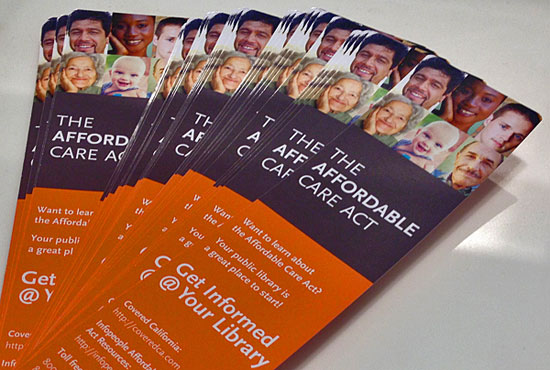
Affordable Care Act bookmarks are available at the info desk at the county's West Hollywood Library.
They don’t wear white coats or wield stethoscopes, but librarians have emerged as preferred providers, of sorts, in Los Angeles County’s massive mobilization to help thousands sign up for health insurance under the Affordable Care Act.
“They reach so many people, and they’re such a trusted source of information,” said Amy Luftig Viste, director of community partner programs for the county’s Department of Health Services. The department has turned to city and county librarians as key partners in a wide-ranging outreach effort that includes handing out brochures and specially printed informational bookmarks, answering basic questions and, at times, reaching out proactively to make sure patrons are aware of the new law and how it could affect them.
Librarians aren’t the only ones out there on the front lines. As the county seeks to draw the attention of hundreds of thousands of uninsured residents newly eligible for coverage under the Affordable Care Act, it has drafted a sometimes unexpected crew of surrogate messengers—ranging from the county Arts Commission to the L.A. City Taxicab Commission—to help get the word out.
The goal: making sure that everybody—even those who might not fit a stereotypical image of the uninsured—knows about their potential benefits under the law.
The health department has “proactively reached out to new populations including taxi drivers, artists, students and recently released jail inmates,” according to a recent report to the Board of Supervisors that also detailed efforts to train city and county librarians on the law.
“One of the challenges we always face is that there is a perception of what the uninsured look like, where the uninsured may live, all of those types of things,” said Tangerine Bingham, deputy director of managed care for the health department. “But we know that uninsured status is across the economic spectrum, and race, ethnicity, occupation.”
Breaking through to various groups and professional subcultures has meant getting creative in thinking about who might qualify for either the state’s new insurance exchange, Covered California, or for Medi-Cal, which is expanding under the new law to extend eligibility to 1.4 million additional Californians. So—beyond partnering with other county departments, such as the Department of Public Social Services—the health department has sought out associations with ties to specific populations, in effect leveraging the organizations’ credibility with their members.
Brochures are now posted at taxi operators’ dispatch centers throughout Los Angeles, and information has gone out to drivers via the mobile display terminals in their cabs. Artists, meanwhile, are being invited to the county Arts Commission on Dec. 5 for an explanatory seminar on “how to get affordable health insurance with the help of tax credits and federal subsidies.”
At libraries, the outreach is broader, building on a growing trend of libraries serving as community centers and repositories of information far beyond the encyclopedias in the reference section.
There are practical reasons for libraries, and librarians, to play a role now.
“We have public computers and we have free WiFi,” said County Librarian Margaret Donnellan Todd, who said librarians knew from the outset that they would be hit with public requests for information as soon as the law rolled out. “We have the ability to kind of navigate [patrons with health care questions] to where they need to be.”
Beyond that, Todd said, librarians enjoy broad public respect as honest and impartial brokers of information. “We don’t have any other motive,” she said.
That’s important, given the controversies surrounding the launch of the system nationally—including persistent glitches on the U.S. website, www.healthcare.gov. California’s exchange, Covered California, has largely escaped the criticism leveled at the national site, although concerns about cancelled policies have been raised here as well as elsewhere in the country. According to numbers released this week, California is leading the country in new enrollments under the law, representing one-third of all Americans who have signed up so far.
“Librarians are getting a lot of questions about the federal website,” Todd said. “But from what I understand, California’s website is in a lot better shape.”
Controversies notwithstanding, questions that library staffers have fielded from the public so far have tended to be fairly basic: “Should I do this? What’s it all about?” said Susan Broman, the county library system’s head of adult and digital services.
Sometimes, Todd said, librarians see the opportunity of reaching out proactively to patrons—like parents and caregivers in the Family Place early literacy program—to make sure they’re getting the information they need about health care reform.
It’s a win-win—for society and for library users of the future.
“Obviously, it’s a very good thing when families have insurance,” Todd said. “One of the things that helps a child get ready to read is a healthy body.”
Posted 11/15/13
Smoking out an LGBT foe
November 14, 2013
With gay men, lesbians and bisexuals firing up far more frequently than heterosexual Californians, health officials are moving to create effective anti-smoking campaigns to persuade LGBT smokers that quitting is smart, community-minded and even sexy.
One project, being rolled out by the Los Angeles County Department of Public Health later this month, plans to take an edgy “break up with tobacco” message into gay bars and clubs.
Meanwhile, the state has released an anti-smoking video aimed at the LGBT community. The video, which shows a couple of handsome young gay men leaving a bar together, doesn’t just target smoking—it also emphasizes the importance of saying no to second-hand smoke. When one of the men starts to light a cigarette outside the bar, the other gently pushes it away from his lips as a voice-over announcer says: “It’s time to speak up. We have to protect each other.”
Nationally, the Centers for Disease Control and Prevention have showcased a lesbian bartender in the widely-watched “Tips from Former Smokers” national tobacco education campaign. The ads feature real people discussing the painful and at-times disfiguring effects of tobacco. Ellie, the bartender, never smoked herself but started having asthma attacks after years of exposure to second-hand smoke on the job.
It’s not the first time that public health officials have tried to confront the problem. Several years ago, for instance, Los Angeles County provided grant funds to several clinics to conduct LGBT-oriented smoking cessation programs. That campaign’s tagline: “Learn how to quit smoking without being scared straight. (As if you could be.)”
But a strongly-entrenched LGBT smoking culture remains, even as overall smoking rates in California have dropped over the past three decades.
Statistics released in June by the state Department of Public Health’s Tobacco Control Program show that gays, lesbians and bisexuals are more than twice as likely to smoke as heterosexuals—27.4%, compared to 12.9%.
More than a quarter of gay men smoke, compared to 16% of straight men, the state found. Among lesbians, 24.4% smoke—a rate 2½ times that of heterosexual women.
What’s more, second-hand smoke is dangerously widespread. More than 40% of gays, lesbians and bisexuals reported that they sometimes allowed smoking in their homes, compared to 23.4% of heterosexuals. The state report draws on data collected in the California Adult Tobacco Study from 2005 to 2010 among self-identified gays, lesbians and bisexuals.
The reasons for the high smoking rates can be complex.
For one thing, stress can be higher in the LGBT community, sometimes compounded by issues associated with coming out or family disapproval, said Susan Cohen, health education consultant for the L.A. Gay & Lesbian Center. Perhaps even more powerful, she added, is a strong bar culture that fosters an “unfortunate partnering of cigarette smoking and alcohol,” even though indoor bar smoking is now outlawed in California.
Others note that while an overall culture of disapproval of smoking and second-hand smoke has grown in recent years, it’s been slower to take hold in the LGBT community, where tolerance is a strongly-held traditional value.
“They’re basically loath to tell other LGBTs what to do or not do…That’s what we believe is translating into a more live-and-let-live attitude toward second-hand smoke,” said Francisco Michel, a media specialist with the state Tobacco Control Program.
Another challenge is confronting tobacco industry advertising aimed at the LGBT community. While some have decried the targeting, others see it, oddly enough, as a sign of respect.
“Some folks say, ‘See, we’re just like any other market,’ ” Michel said.
That’s why health officials believe it’s important, and effective, to fight fire with fire, offering another story line—preferably one that is sophisticated and engaging—to offset Big Tobacco’s persuasive tactics.
“I do think we have to continue with counter-messaging,” said Cohen, of the Gay & Lesbian Center. “The tobacco industry spends billions to get us to smoke.”
Posted 10/31/13
A Sunset stroll
November 14, 2013
When it comes to challenging our car culture, massive events like CicLAvia, with its 100,000-plus cyclists, send a loud message about the growing momentum and demand for alternative transportation. But before there was CicLAvia, there was the more modest—but equally committed—Great Los Angeles Walk, which has been putting one foot after the next on L.A.’s most famous streets for the past 8 years.
Michael Schneider has organized the walks since 2006, when about 30 to 40 brave souls met to tackle all 16 miles of Wilshire Boulevard. Walkers now number around 300 each year.
“It always sounds daunting to people who haven’t done it before,” Schneider said. “But it’s not a race. It’s about taking your time and exploring. I come back with hundreds of photos of things that you normally miss.”
Taking a slower, closer look at L.A.’s street life is a motivating factor behind the walk, an outgrowth of local historic trips that Schneider used to organize. After Wilshire, the event sauntered along a new route each year, including Hollywood and Pico boulevards and Melrose Avenue.
On Saturday, November 23, the walk will take on that most iconic of L.A. thoroughfares, Sunset Boulevard. Schneider says the boulevard’s streetscapes have plenty to offer, from the boutiques and eateries of Silver Lake to the legendary night clubs of the Sunset Strip.
Walkers will embark at 9 a.m. from the “Lady of the Lake” statue in front of Echo Park Lake. They’ll follow Sunset westward to the edge of Beverly Hills before turning south on Whittier Drive to Wilshire, where they’ll head west to the statue of Saint Monica at Santa Monica Beach. “We’re going from statue to statue,” Schneider said.
The Great L.A. Walk has a very SoCal swagger. All comers are welcome, including dogs and kids, and they’re encouraged to break into groups, walk at their own pace and tackle as much or as little of the 17.8-mile route as they want. The event’s Twitter account will be updated throughout the day with the location of the group’s nucleus, should latecomers want to jump in along the way.
Walkers will be responsible for their own safety during the event, which takes place on sidewalks only. Getting there and back is also walkers’ responsibility; Schneider said many choose to take public transportation, while others join friends and station cars at each end of the route.
Those are the basics, but more is forthcoming on the Great L.A. Walk blog, where Schneider said he will announce an opening speaker, identify the location of an official after-party and add other details in the coming days. On the day of the walk, flyers with historical information and landmarks will be distributed.
With the holidays fast approaching, Schneider said, this might be a way get a head start on the gravy and pumpkin pie. “It’s a way to get out there and get some exercise,” he said, “before we gorge ourselves on Thanksgiving.”
Posted 11/14/13
County has designs on voting
November 13, 2013
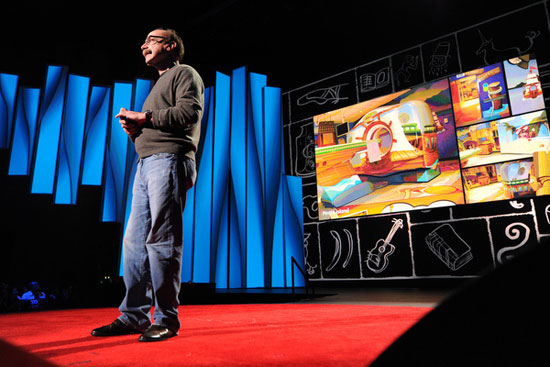
IDEO founder David Kelley has melded utility with elegance in his firm's designs for famous clients.
It’s not easy to re-imagine the largest voting system in the nation, but it doesn’t hurt to have the company behind stand-up toothpaste on your team.
For the past year or so, Los Angeles County has been working closely with IDEO, the innovative Bay Area design firm, to help with the county’s multi-faceted initiative to update its antiquated voting apparatus. The challenge is a big one: The county’s system serves some 4.8 million registered voters in 11 languages at some 5,000 polling places, and is currently using technology that dates, in some cases, to the 1960s.
So in an effort to think creatively about the future, the office of the Registrar-Recorder/County Clerk and the committees guiding the county’s Voting Systems Assessment Project reached out to a firm whose groundbreaking design work goes back to Apple’s first computer mouse in the 1980s.
“We wanted to focus on innovation, and we were attracted by their philosophy of design that’s human-centered,” says Efrain Escobedo, governmental and legislative affairs manager for the Registrar-Recorder/County Clerk’s office. IDEO, he says, studies “what the experience is underlying a project—whether it’s a filling station or a vegetable peeler—rather than just designing around what’s cheapest.”
Created as a merger of four design firms—one in Palo Alto, two in San Francisco and one in London—IDEO, which is now global, specializes in cutting-edge product and organizational design. One of its founders, David Kelley, was close friends with the late Apple co-founder Steve Jobs, whose elegant products became a computer industry standard. But IDEO’s work has run the gamut, from upright dispensers for Crest toothpaste to a rethinking of school lunches.
Initially, Escobedo says, the county learned about IDEO during an experiment with crowdsourcing in which the county put out a call for ideas on the future of voting through OpenIDEO, an online platform and community. But in early 2013, after conducting its own extensive data-gathering process, the county engaged the company’s consultants to help analyze the research under a series of short-term agreements worth about $1 million.
Among IDEO’s objectives is a rethinking of the traditional voting machines so they not only accommodate voters in a multiplicity of languages and settings, but are also universally accessible no matter the voter’s age, education, familiarity with the process or physical abilities.
“We’ve delivered three really, really rough concepts that we’re working now to whittle down into one,” says Sarah Rienhoff, IDEO’s public sector lead on the voting project. Visual renderings and mock-ups have ranged from boxy one-stop, hands-free voting stations to lightweight podium-like contraptions that can be easily moved around by poll workers and stored.
To augment data the county gathered, IDEO consultants examined on their own the extremes of the voting spectrum—newly naturalized citizens, older voters, young voters, people who had stopped voting and people with physical limitations that impacted their use of the existing system.
That last group was especially important, in part, because advocacy groups for the disabled have sued over issues such as the lack of touch-screens and the paper ballot requirement—mandates that, they contend, make voting harder and less private for visually-impaired voters.
So, Rienhoff says, the group put a special emphasis on disabled voters. One focus group brought county staffers nearly to tears as a man with cerebral palsy talked about the alienation of being shunted off to vote in a separate booth for handicapped people.
Another exercise took the form of an educational field trip.
“We did ‘dining in the dark’ at Opaque, a restaurant in Santa Monica where all the [servers are] visually impaired or blind and the customers eat in a fully dark dining room,” says Rienhoff, adding that they went back the next day to interview their waiter—one of more than 44 individual interviews they conducted last spring.
The IDEO group also studied lottery kiosks as an example of a system in which decision-making is paired with convenience and observed elections in Pasadena and Compton to compare voting in diverse communities.
What’s more, the firm’s creative approach served to inspire the Registrar-Recorder staff, Escobedo says. Among other things, they created an “idea wall” in the executive office in Norwalk after visiting IDEO’s workspace.
As the project’s self-imposed 2016 deadline approaches, some broad outlines have begun to take shape. For one thing, Escobedo says, it is clear that the new system won’t include voting via Internet or smart phone, at least for now, due to security concerns.
That, however, doesn’t preclude the possibility of the vote-by-mail option morphing someday into a scanned ballot sent by encrypted email, or a digital tablet onto which voters can electronically upload their pre-marked decisions. Also, look for bigger ballots, voting machines with universal design and hands-free access and possibly a voting process that revolves less around a single day at a single polling place than, say, a 2-week voting “window” or community voting centers.
“By the end of the year, we hope, we’ll have an actual final design concept that we can begin to engineer,” says Escobedo, who expects to start prototyping some time next year.
One aspect of the process is unlikely to change, however: That little “I Voted” sticker?
“Oh, that’s a mandatory do-not-leave-out,” laughed Escobedo. “People love that. It’s not going anywhere.”
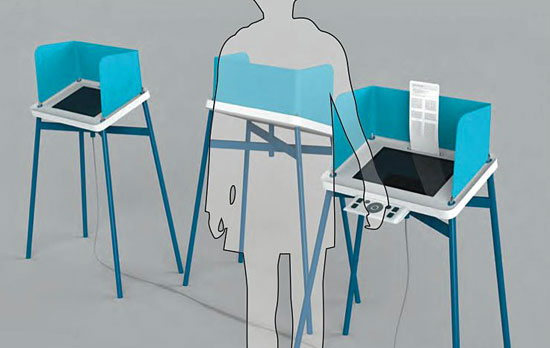
One possibility for future voters might be more portable voting machines, as seen in this IDEO rendering.
Posted 11/13/13
A beach for one and all
November 7, 2013
When it comes to reinforcing stereotypes of the California dream, few towns can match Manhattan Beach. Its finely-groomed sands draw scores of barely-clad stars of beach volleyball, including Olympic champions. Its waves are crowded with high-flying surfers and its shoreline bikeway is among the region’s most scenic.
But now, thanks to the persistence of a 90-something activist, the South Bay community is clearing the way for a new group of beachgoers to hit the sand, a group that’s certain to grow as baby boomers advance well into their senior years.
On Tuesday, the Board of Supervisors approved the drafting of an agreement between the city of Manhattan Beach and the county’s Department of Beaches and Harbors for the construction of a “Path to the Sea” that will provide access on the sand for people with disabilities.
Already, Santa Monica has two access ramps across the sand near the pier that stop short of the water, one made of wooden planks, the other of recycled tires. There’s also one that travels alongside the north jetty and at “Mothers Beach” in Marina del Rey.
But the permanent concrete path proposed for Manhattan Beach, which juts directly onto the sand, is the first of its kind for southern Los Angeles County-operated beaches. It will be located at the city’s northern end near the popular El Porto parking lot, where wheelchair ramps currently exist. From there, the 10-foot-wide path will extend 70 feet onto the beach, with a broad turnaround at the end, about 150 feet from the water’s edge.
The project represents an “a very interesting experiment” that poses challenges unmatched by other kinds of access for disabled people, said Chief Deputy Director Kerry Silverstrom of the Department of Beaches and Harbors. Foremost among those, she said, was determining how to construct a permanent path that won’t be undermined by eroding sand or damaged by tractors that drag the beach for trash.
“The beach is a natural resource that should benefit everybody,” Silverstrom said. “But it’s particularly complicated with urban beaches where a lot of grooming occurs…It’s hard enough to keep a bike path maintained. How do you keep these kinds of walkways maintained and free of sand for people who need them?”
Logistical questions like these kept the project on the drawing board for years, to the frustration of neighborhood activist Evelyn Fry, 98, the driving force behind the walkway, which will be constructed by Manhattan Beach, at an estimated cost of between $33,000 and $38,000, but cleaned daily by the county.
Fry, who is not herself disabled, championed the path as part of her active participation for decades in the civic life of the community, to which she moved in 1938. She could not be reached to discuss her latest success.
According to Manhattan Beach engineering technician Ish Medrano, Fry wanted the concrete path to extend to the shore’s edge. But that wasn’t possible, he said, because of the possibility of it being washed away by the surging sea. “I think she’s going to be a little disappointed,” Medrano said of Fry, who became so well known at City Hall that when she walked through the door “it was like an alarm going off: ‘Evelyn’s here!’”
Medrano described Fry as “the nicest woman” but “relentless” in her six-year crusade. “I think she’d like to see it completed before she passes away,” Medrano said, quickly adding: “She’s joked about that herself.”
Posted 11/7/13
Ramp Jam, R.I.P.
November 6, 2013
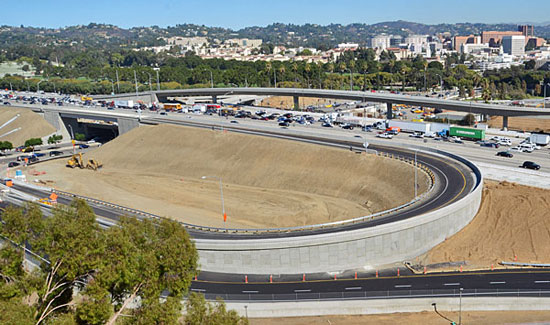
A view of the completed Wilshire interchange facing northeast, with the newest ramp in the foreground. All of the reconstructed ramps are open to the public as of Thursday. Photo/Metro
The long-running freeway ramp construction project at one of L.A.’s most notoriously jammed intersections is officially in the rear view mirror.
The reengineering and reconstruction of the Wilshire flyover ramps—one of the most visible and ambitious elements of the 405 Project—wraps up officially on Thursday, Nov. 7, with the reopening of the eastbound Wilshire onramp to the northbound freeway.
With that last piece in place, all of the new Wilshire ramps will be fully open for business—that’s right, the construction effort known variously as “Ramp Jam” or “The Rampture” is over. After getting started on June 22 of last year, the massive project-within-a-project is wrapping up 13 days ahead of schedule.
Michael Barbour, who manages the project for Metro, said traffic in the area should get better for locals and all drivers passing through.
“The most significant improvement to any one interchange in the entire project is right here,” Barbour said. “It’s going to bring an operational improvement across the board.”
Before the project, motorists frequently backed up on the I-405 and Wilshire and Sepulveda Boulevards as they waited to enter or exit the freeway. With the new configuration, the capacity of the on-ramps and off-ramps has been significantly increased. For example, the ramp that opens Thursday is 3,129 feet long—more than three times the length of the old one, which was built in the 1950s. That added space will accommodate more of the approximately 8,000 vehicles that take the ramp each day, getting them out of normal traffic lanes. Turning lanes have also been added on Wilshire and Sepulveda so vehicles can slow down to get on the freeway without slowing everyone else down as well.
The new intersection will improve safety, too, Barbour said, with fewer vehicles weaving through lanes to get on and off the freeway.
The early opening of one of the nation’s busiest intersections is a welcome development for a project that has been beset by delays and cost overruns. According to Metro, construction work is now 85% complete. Next up is one last ramp at Sunset Boulevard, which should be completed by the end of November. At that point, all permanent ramp closures for the entire project will be finished. Barbour also expects all bridge work to be completed by the end of this year.
However, some construction will continue into mid-2014. That includes work on the medians around Sunset and Getty Center Drive, and median work further north near Valley Vista Drive.
The project as a whole has brought massive disruptions and inconvenience to the lives of commuters and nearby residents—and Barbour is the first to acknowledge what they’ve gone through.
“There has been a lot of frustration,” Barbour said. “Everybody wants a wider, better freeway, but the residents have taken the brunt of the effort.”
Still, each step toward completion is a satisfying moment for Barbour—a chance to put the past behind and to begin harvesting the fruit of more than four years of hard work.
“It’s going to be much better operationally, and we’re expecting to see something more manageable for folks, so that’s good,” he said.
When fully complete, the 405 Project will deliver a new 10-mile northbound carpool lane, three rebuilt bridges, ramp improvements and other modernizations along the heavily traveled stretch between the 10 Freeway and the 101 Freeway.
Those interested in finding out more or providing feedback on the project can attend a community meeting this Thursday evening at 6 p.m. at the Westwood Recreation Center.
Posted 11/6/13




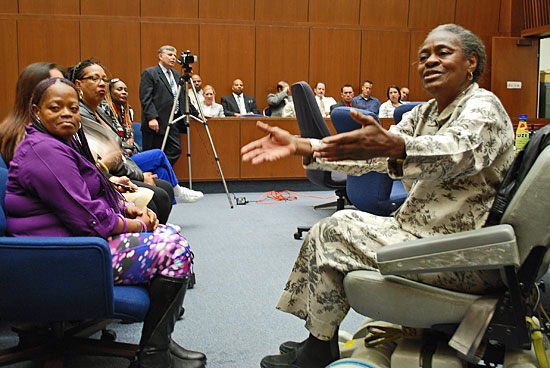
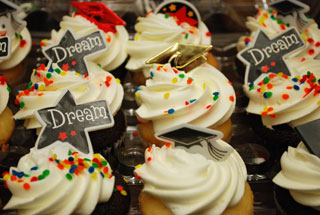
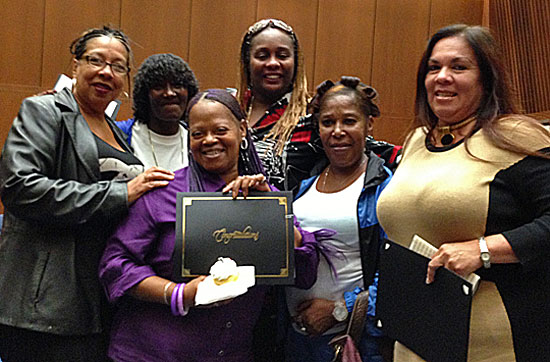

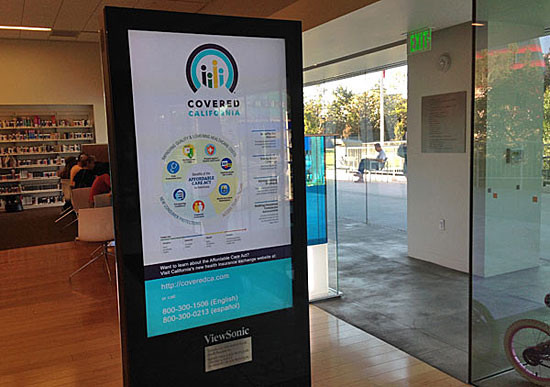
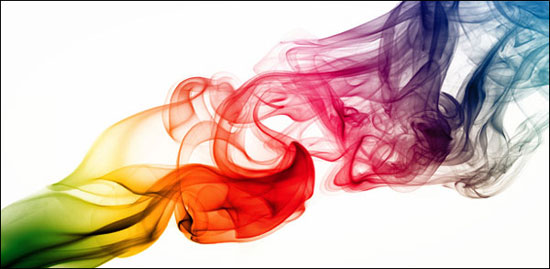
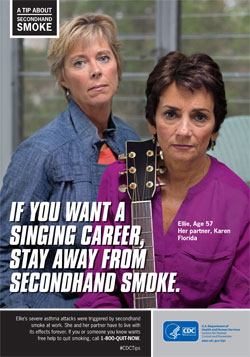
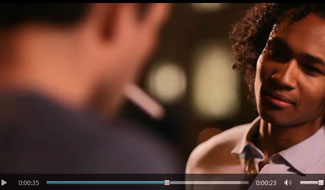
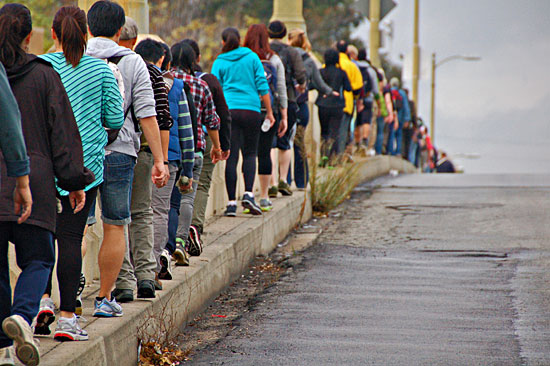
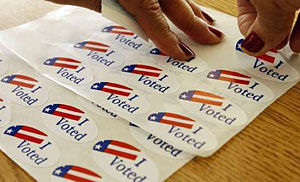
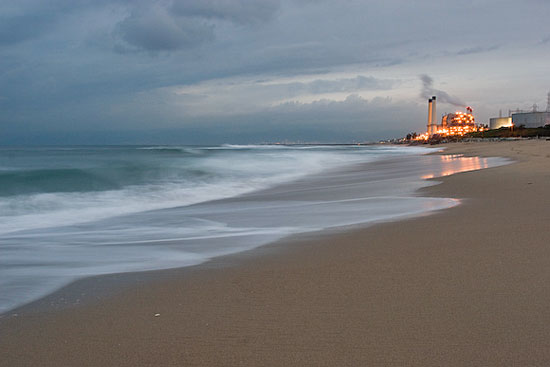





 Check for the latest closure information
Check for the latest closure information








